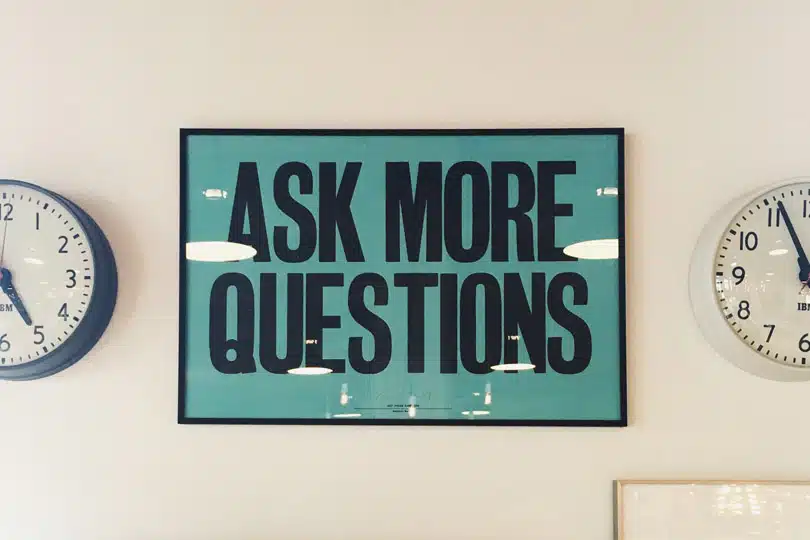If you’ve kept up with Scan2CAD’s blog, you’ll know that we’ve already covered topics surrounding the types of CAD jobs that are available. We’ve even talked about the types of salaries that you could expect in certain CAD careers. But you might be wondering how exactly one might go about finding a CAD job. As usual, Scan2CAD has you covered.
Our guide aims to give you ultimate tips covering: what skills CAD employers are looking for, what it takes to get noticed and how you can advance your CAD career. We’ve even included sections on job hunting and how to write the perfect CAD resume— plus top job resources to take advantage of!
Table of Contents
- Starting Out
- What Skills Are CAD Employers Looking For?
- What Does It Take To Get Noticed?
- Job Hunting 101
- Putting Together Your CAD Resume
- How To Advance Your CAD Career
- Top Resources
- Conclusion
Starting Out

Before you throw yourself into the wide world of job seeking, you need to take a few steps back. Your first step should be figuring out which CAD industry sector you’re interested in working in. As we’ve discussed in our guide to AutoCAD Careers, there are hundreds of CAD jobs out there in different industry sectors. You might be interested in drafting, designing or even engineering. The point is, you need to know which industry you want to venture into as they all require different preparation.
For example, if you’re interested in a drafting career you need only complete an associate’s degree for an entry-level position. You could voluntarily choose to obtain an ADDA certificate, but it’s not a requirement. In comparison, if you were interested in an engineering career you would need to complete a bachelor’s degree—many engineers even go on to complete a master’s degree. In addition, engineers are strongly advised to obtain a PE license in order to apply for management roles.
If you want a bit more information on the matter, check out CAD Salaries—Everything You Need To Know. This will give you more details regarding the types of CAD job roles available, and their respective salaries. Once you have a broad idea of what job roles you’re qualified to apply for, you can check out the rest of our tips and advice below.
What Skills Are CAD Employers Looking For?

As with most jobs, there’s a certain set of skills that CAD employers are looking for. Some of these are applicable to jobs outside of the CAD industry, which we’re labeling ‘General Skills‘. Other skills are more specific to CAD jobs, which you will need to hone if you’re looking for a permanent job.
General Skills
![]() Communication Skills. You need to be able to communicate well in order to present your ideas and share your opinions or criticisms with management, co-workers and clients. You’ll also have to be accustomed to giving presentations and contacting people via email and phone.
Communication Skills. You need to be able to communicate well in order to present your ideas and share your opinions or criticisms with management, co-workers and clients. You’ll also have to be accustomed to giving presentations and contacting people via email and phone.
![]() Team Working. Most jobs will require you to work well in a team, and CAD jobs are no different. If you’re a designer for example, you’ll need to work with other designers and engineers to create a product. You need to show flexibility and team-leading capabilities.
Team Working. Most jobs will require you to work well in a team, and CAD jobs are no different. If you’re a designer for example, you’ll need to work with other designers and engineers to create a product. You need to show flexibility and team-leading capabilities.
![]() Problem Solving Skills. As with every job, CAD jobs will come with their fair share of problems to face. You need to be able to identify a problem, assess and analyze it, and make a decision on how to handle it—highlighting any possible solutions.
Problem Solving Skills. As with every job, CAD jobs will come with their fair share of problems to face. You need to be able to identify a problem, assess and analyze it, and make a decision on how to handle it—highlighting any possible solutions.
![]() Enthusiasm. Potential employers will want to see evidence of you showing enthusiasm for CAD—whether it’s you pursuing additional training, obtaining a certificate or building up your own personal portfolio. A desire to learn new CAD skills could also be evidence of this enthusiasm.
Enthusiasm. Potential employers will want to see evidence of you showing enthusiasm for CAD—whether it’s you pursuing additional training, obtaining a certificate or building up your own personal portfolio. A desire to learn new CAD skills could also be evidence of this enthusiasm.
CAD-Specific Skills
![]() Proficiency with CAD. You need to be familiar with popular CAD programs like SolidWorks, AutoCAD or Revit. The more programs you’re familiar with, the more likely you’ll be able to transfer your skills—not all companies use the same program, so you need to be adaptable. You could practice with CAD freeware, though bear in mind that it will have its limitations.
Proficiency with CAD. You need to be familiar with popular CAD programs like SolidWorks, AutoCAD or Revit. The more programs you’re familiar with, the more likely you’ll be able to transfer your skills—not all companies use the same program, so you need to be adaptable. You could practice with CAD freeware, though bear in mind that it will have its limitations.
![]() Adaptability. CAD is constantly changing, so you need to stay updated with the latest developments in the CAD industry—for example, any major CAD vendor releases or technological innovations like cloud-based CAD. You need to be prepared to learn new things and show a willingness to adapt.
Adaptability. CAD is constantly changing, so you need to stay updated with the latest developments in the CAD industry—for example, any major CAD vendor releases or technological innovations like cloud-based CAD. You need to be prepared to learn new things and show a willingness to adapt.
![]() Experience. You need to show you have the required experience for a CAD job. This could include your education, formal internships and previous jobs. Any freelance work you’ve completed could also count as relevant experience. If you don’t have enough experience, see our Resume section for help.
Experience. You need to show you have the required experience for a CAD job. This could include your education, formal internships and previous jobs. Any freelance work you’ve completed could also count as relevant experience. If you don’t have enough experience, see our Resume section for help.
![]() A portfolio. This is essentially a representation of your experience—a chance to put together your best projects and highlight your expertise in CAD. A portfolio gives potential employers the chance to see what you’re capable of, which could have a bigger impact than a resume.
A portfolio. This is essentially a representation of your experience—a chance to put together your best projects and highlight your expertise in CAD. A portfolio gives potential employers the chance to see what you’re capable of, which could have a bigger impact than a resume.
These skills are just the tip of the iceberg of course. The important thing is to remember that you need to be constantly working on expanding your skill set—don’t just stick to what you know.
So What Does It Take To Get Noticed?

So what does it actually take to get noticed in the CAD market? Obviously, you need to have a well-thought out resume that’s catered to your chosen industry sector—but we’ll discuss this more thoroughly in the Resume section.
Social Media
In this day and age, social media is a prevalent factor in successful employment—whether it’s Facebook, Twitter or LinkedIn, it’s all useful in helping you. If you play your cards right, you can successfully use your social media to advertize yourself—essentially showing potential employers exactly why they should hire you. LinkedIn is possibly the strongest social media platform to use—if you take the time to create a detailed profile, you might get noticed by a potential recruiter or employer.
Create Your Own Website
It’s easy to create your own website or blog, even if you’re not too tech-savvy—just use services like WordPress. Having your own blog or website gives you a place to show off your projects and portfolio. This allows you to publicize your skills to potential clients and employers, giving them a taste of your capabilities. It also gives you the ability to track your own progress—you’re able to see your best projects, which can inspire and motivate you to work harder. You won’t want to upload average projects online after all. You could even include your site’s URL on your LinkedIn profile and resume.
Networking
Networking is the way in which you use your connections to people to aid your attempts in finding a job. A network could consist of your fellow college alumni, your close friends and family, or even past colleagues and employers. The easiest way to network is through services like LinkedIn. Many jobs aren’t generally advertized, so having an extensive network could give you the option to apply. It’s like having an inside man who will vouch for you, or offer your name up for a position. You might even find yourself applying for a job at a company that one of your connections works at—you could then ask for tips or advice. Taking the time to build up a network therefore, will be beneficial for you and your future.
Don’t Stop Learning
Learning is a constant, ongoing process. Just because you consider yourself to be an expert in AutoCAD or SolidWorks, for example, doesn’t mean that you should stop learning. You don’t want your skills to diminish with time, especially considering how much software is constantly updating—you need to stay on the ball. There’s always a new program or a new feature that you won’t have tried yet. If you challenge yourself with daily or weekly tasks, you’ll reap the rewards later in life.
Get Experience
As we’ve highlighted in the Skills section, experience is a necessity for CAD jobs. So, where exactly do you get this experience? If you haven’t had a job previously, you can count formal internships as a form of experience—a lot of degrees offer them nowadays. Alternatively, one of the easiest ways to get experience is through freelance work. The pay rate might not be satisfactory to begin with, but it’s still useful for updating your portfolio and expanding your network. You might even find clients that will want to use your services again in the future. You can find freelance job websites in the Resources section.
Job Hunting 101

Once you’ve sorted out the skills and qualifications you need to work in a certain industry sector, you’ll be looking to find a job. It can be a lengthy and difficult process, but we’ve got you covered with some tops tips—plus a section below dedicated to writing the perfect resume.
You can start your job hunt by making use of job databases like Monster (you can find more in the Resources section). Using keywords, you can find potential jobs. Searching for ‘CAD Drafter‘ jobs for example, will give you a lot of results. It can be all too easy then to apply for all of them, which is something you should avoid. Take your time and look at what the role entails, what exact qualifications are needed, and whether you’re actually suited to the role.
Once you’ve found a few potential jobs, you should research the companies—you can do this through their website. What direction is their business going in? Who are their competitors? What are their ethics? These types of questions will help you tailor your resume to fit the company you’re applying for. They’ll also help you during the interview stage, as interviewers are likely to test your knowledge of the company.
Unfortunately, rejection is a part of the job hunting process. While the CAD industry is constantly expanding, it has also seen its fair share of decline in employment. This certainly doesn’t mean you should give up—the world doesn’t just stop spinning because you failed. Go back to square one and keep looking for relevant jobs. In fact, it might be worthwhile asking interviewers which areas you need to improve upon after an interview. This will help you strengthen your flaws in time for the next interview.
If you still haven’t had any luck, you might want to looking into doing some freelance work while you’re waiting. This will give you extra experience to add to your resume, and it will help you build up your confidence with working with clients.
Putting Together Your CAD Resume

Once you have a list of potential jobs you want to apply for, you need to start working on your resume. It’s important to take your time with this, as it can be your only chance to make a big impact.
When you’re writing your resume (and cover letter), there are two main questions you need to answer:
- Why do you want to work for this company?
- What makes you the best candidate for the job?
Before you try to answer these questions, you need to research the companies you’re applying for. This research will help you tailor your resume to target each company, because the ‘one size fits all‘ principle does not apply here. You can’t send duplicates of the same resume to different companies and expect to get a reply. Check out their website—look at their history and what qualities they appear to value, e.g. team work. You could even try to find people who work in a similar position or at the same company to get some extra information. There’s no such thing as too much research when it comes to writing your resume.
You can then relate your skills and experience to target a particular company. You could even link your future goals to the company’s business direction, aligning yourself with the company’s future. A resume is your chance to convey your skills; whether it’s a proficiency in Revit or a year-long internship at an architectural firm. Explicitly mention your skills and experience, but be concise and prioritize. If you have a few gaps in experience, talk about relevant modules that you studied as part of your degree. If you can’t do that, highlight your willingness to learn new skills on the job—it will show that you’re committed to becoming a hardworking, adaptable employee.
One of the key details in writing your resume is ensuring that you’re engaging—people won’t spend long reading your resume after all. For some extra tips, check out below.
Writing Tips
- Don’t make it more than 2 pages long.
- Stick to standard fonts like Times New Roman, size 10-12.
- Be consistent if you use styling.
- Use reverse chronological order—your most recent job first, and then go backwards.
- Include length of employment, position and any accomplishments.
- Statistics stand out, so if you increased your company’s efficiency by 12%—include it.
- Avoid overused buzzwords e.g. ‘creative’, ‘good communicator’ or ‘ambitious’.
There are plenty of online resources that you can use to help perfect your resume, like resume writing tips from Monster or the only resume advice you’ll ever need from Forbes. Take the time to ensure your resume is perfect before sending it off—you only make one first impression after all.
How To Advance Your CAD Career
If you’ve already got yourself a cushy CAD job, you might be looking for ways to advance your career. After all, you don’t want to be stuck in the same job position for your entire life! If that’s the case, we’ve put together a few top steps to help you advance your career.
1. Create a Career Timeline
A career timeline is exactly what it sounds like—it’s a timeline listing where you want to be in five or ten years time. You could make it as detailed as you want—include monthly goals. Once you have a trajectory in mind, you can set yourself clear tasks. For example, if you want to be a Project Manager, you might need to obtain certification and work under an experienced manager—these are doable goals that you can add to your timeline.
2. Further Your Education
One of the best ways to be held in consideration for a promotion is to further your skill set. The most common way to do this is through further education. For example, if you have an associate’s degree, the next step would be to obtain a bachelor’s degree. Or, if you already have one, you could look into pursuing a master’s degree. Alternatively, you could look into the types of certification that are available in your industry sector, e.g. an ADDA certificate for drafting.
3. Brush Up On Your Skills
Don’t just stick to what you know—change can be a good thing, especially in relation to jobs. It’s worthwhile trying something new—whether it’s a new workstation or a different design process. If you can add a new CAD program to your list of skills on your resume, or even certification, it might give you access to a higher job position that you previously couldn’t apply for. Alternatively, see if there are any opportunities in your current job. For example, if there’s a presentation or team project, or if there are any additional responsibilities you can take on board to gain extra experience.
4. Ask For Feedback
It’s always worthwhile looking for ways in which you can improve yourself. In that regard, it might be useful asking your co-workers or even your manager ways in which you could improve—or if there are particular aspects to your job that you’re slightly ‘weaker’ in. This gives you the opportunity to address your weaknesses and hopefully strengthen them. You could always look into finding yourself a mentor, e.g. a manager or colleague that you admire who might be willing to give you tips or advice along the way.
5. Talk To Your Manager
If you’ve already taken the above steps and you’re still looking to advance in your career, the next logical step would be to talk to your manager. The best time to broach career advancement is typically during a performance review. Of course, you would need to have firm evidence backing you up—proof that you should be considered for a higher role. This could be your completion of a certain project, the acquisition of a certificate, or experience under a manager who would recommend you for the role. If it isn’t well-founded however, your boss might assume that you’re being a little presumptuous—which could put your advancement in jeopardy.
Top Resources

If you’ve reached the end of our guide and you’re not sure where to start the search for your new CAD job, don’t worry—Scan2CAD has you covered. We’ve put together a list of the best job databases that you should be using. We’ve included a list of freelance job sites, which will be useful for gaining experience while you’re waiting for a concrete job. Plus, we’ve compiled a list of sites that will help you find internships—thus expanding your experience and skillset. Take full advantage of the resources we’ve listed below, as it will definitely pay off in your job hunt.
Job Sites
Freelance Job Sites
Internships
You shouldn’t just rely on job sites however—there are plenty of websites and blogs out there which are perfect for general career advice and tips. LinkedIn’s blog, for example, posts regular articles about the job market and tips from career professionals. There are also resources like The Wall Street Journal which offers career advice and salary trends. The point is, there are many blogs out there which will give you extra help in your job search. You should check out a few CAD blogs, so you can stay on top of all the latest CAD news and innovations. If you’re not sure where to start, take a look at Scan2CAD’s blog. We cover all the latest CAD news and offer tips and advice for CAD users.
Conclusion
Finding the perfect CAD job can be a lengthy and difficult process, whether you’re experienced or not. You have to search through all of the job databases to find relevant jobs, then you have to research and write your resume before sending it off—not to mention the fact that it can take a while for interviews to be organized. It’s easy to see, then, why searching for a job can be such a daunting prospect for so many people out there. However, it’s important not to give up—even if it’s your hundredth job rejection. One of the great things about CAD is that there are so many industry sectors to work in, plus there’s always room for advancement. The chances of you finding a CAD job online therefore, are very high. The chances of you successfully getting the job however, all depends on you.
If you’re really committed to getting a CAD job, it’s important that you take the time to go through the steps we’ve discussed. Only apply for relevant jobs, and remember that research is key—ensure that your resume is tailored to target the particular company you’re applying to. There are plenty of opportunities out there, so do your research. If a job role requires you to have higher qualifications or skills, consider taking the time to get them. And if you think learning how to use a new CAD program will help—do it. You need to be prepared to keep learning and keep improving yourself and your skills.
If you have the drive, the patience and the commitment, you could find yourself that dream CAD job!

